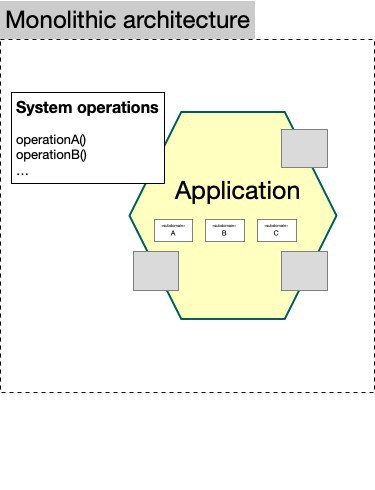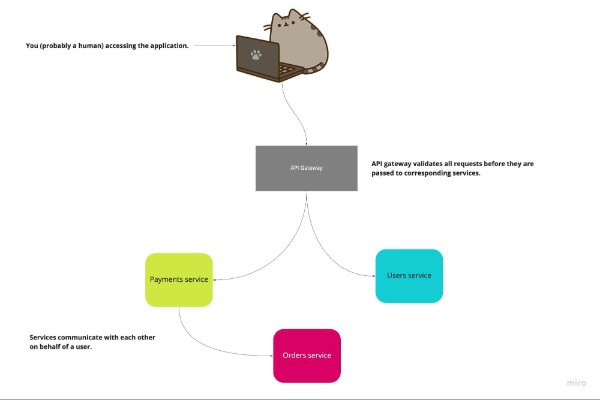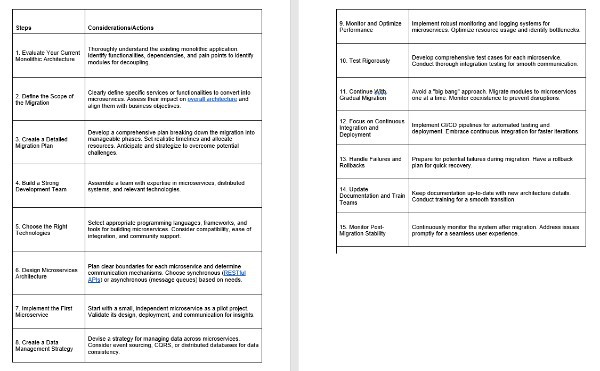In the rapidly evolving landscape of software development, staying ahead of the competition requires continuous improvement in agility and efficiency.
Traditional monolithic architectures, once the go-to choice for building applications, are now facing challenges in meeting the demands of modern development.
As a solution, the industry has turned to microservices architecture — a paradigm that promises to unlock newfound flexibility and scalability.
This article delves into the transition from monolith to microservices, exploring the benefits, challenges, and best practices that organizations need to consider on their journey.
Understanding Monolithic Architecture :-
A monolithic architecture refers to a software system that is built as a single, tightly integrated unit. In such systems, all components are interconnected, and changes in one module often require rebuilding and redeploying the entire application.

This tight coupling can hinder the ability to innovate and evolve quickly. Monoliths may have served organizations well in the past, but with the rise of cloud computing and the need for scalable and adaptable applications, they have become a hindrance.
Challenges of Monolithic Architecture :-
There's no question that monolithic architecture throws up a fair number of challenges. Here are some of the most prevalent issues:
- Scalability Concerns: Scaling a monolithic application can be complex and expensive. Organizations often need to scale the entire application, even if only a specific component is experiencing increased demand.
- Development Bottlenecks: In monolithic systems, development teams might find themselves waiting on one another to make changes. This situation can lead to delays in the software release cycle.
- Dependency Management: Managing dependencies in a monolithic architecture can be challenging. Updates or changes in one module can have unforeseen consequences on other parts of the application.
- Testing Complexity: Testing a monolith requires extensive testing scenarios, making it time-consuming and prone to errors.
The Rise of Microservices Architecture :-
Microservices architecture is a modern approach to building applications, where a complex system is broken down into smaller, independent services that communicate with each other through APIs.

Each microservice is responsible for a specific business capability and can be developed, deployed, and scaled independently. This newfound modularity addresses the shortcomings of monolithic architecture and brings a range of benefits.
Advantages of Microservices Architecture :-
Microservices architecture has numerous advantages to offer. Let's delve into some key ones.
- Improved Scalability: Microservices allow organizations to scale individual services independently, efficiently utilizing resources and reducing costs.
- Faster Development Cycles: With smaller, focused teams working on independent microservices, development cycles become more agile, enabling faster feature releases.
- Enhanced Fault Isolation: Failures in one microservice do not necessarily affect the entire application, resulting in higher fault tolerance.
- Technology Diversity: Microservices give developers the freedom to use different technologies and programming languages for each service, aligning with specific requirements.
- Increased Productivity: Independent development teams can work simultaneously without causing bottlenecks, improving overall productivity.
Key Considerations for Transitioning to Microservices :-
Transitioning from a monolithic architecture to microservices requires careful planning and execution. Here are some essential considerations:
- Service Boundaries: Identify and define clear boundaries for each microservice, ensuring they have distinct responsibilities and minimal overlap.
- Communication and APIs: Establish well-defined communication channels and APIs for seamless interactions between microservices.
- Data Management: Decide on a data storage strategy that best suits each microservice's needs, considering options like databases, caching, and event sourcing.
- Deployment and Monitoring: Implement robust deployment strategies and monitoring mechanisms to manage the lifecycle of microservices effectively.
- Organizational Alignment: Ensure that the organization's structure supports the shift to microservices, with dedicated teams and resources allocated for each service.
How To Migrate Your Business From Monolithic to Microservices :-
Migrating from a monolithic to a microservices architecture is a significant undertaking that offers numerous benefits for software development. It enables organizations to achieve greater agility, scalability, and fault tolerance.
Luckily, you don't have to search for "migrating from monolithic to microservices: a practical guide" in Google.
Below, we present a step-by-step process summarizing the practical steps involved in successfully moving from a monolithic architecture to a microservices architecture.
By following these practical guidelines, you can embrace the advantages of microservices and stay at the forefront of modern software development practices.

Overcoming Challenges in Microservices Adoption :-
The adoption of microservices architecture has become increasingly popular among organizations seeking to revolutionize their software development practices.
With promises of enhanced scalability, flexibility, and fault tolerance, microservices offer a compelling alternative to traditional monolithic systems.
However, transitioning to a microservices architecture comes with its unique set of challenges that demand careful attention and strategic planning.
Some common hurdles include:
- Distributed Systems Complexity: Microservices introduce the complexities of distributed systems, requiring a comprehensive understanding of distributed computing concepts.
- Data Consistency: Maintaining data consistency across multiple microservices can be challenging. Organizations must implement appropriate strategies to handle this issue.
- Service Discoverability: Efficient service discovery mechanisms are crucial to finding and connecting with microservices in dynamic environments.
- Operational Overhead: Microservices add operational overhead in terms of managing multiple services and ensuring their smooth coordination.
Conclusion :-
Transitioning from a monolithic architecture to microservices can significantly impact an organization's agility and efficiency in software development. Microservices offer greater scalability, faster development cycles, and improved fault tolerance.
Nonetheless, the transition requires thoughtful planning and a clear understanding of the challenges involved.
By carefully considering service boundaries, communication, data management, and organizational alignment, businesses can unlock the full potential of microservices architecture.
FAQs :-
Is it necessary to convert the entire application to microservices at once?
No, organizations can also adopt a gradual approach, converting individual modules to microservices over time.
Can microservices be used with any programming language?
Yes, microservices can be built using various programming languages and technologies, making them highly versatile.
How do microservices improve application reliability?
Microservices' fault isolation ensures that failures in one service do not cascade to affect the entire application, enhancing overall reliability.
What role does DevOps play in microservices adoption?
DevOps practices are vital in managing the complexity of microservices, ensuring smooth integration, deployment, and monitoring.
Recommended Articles
Tags - Increase Website Traffic | Published On - 9 Apr 2023
Tags - Increase Website Traffic | Published On - 9 Apr 2023
Tags - Increase Website Traffic | Published On - 9 Apr 2023
Tags - Make Money Online | Published On - 9 Apr 2023




